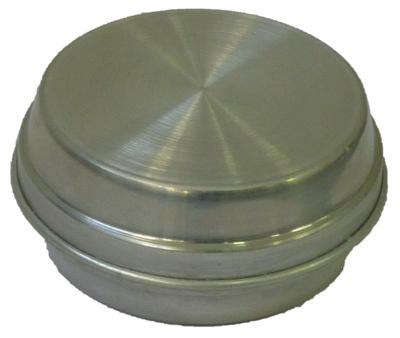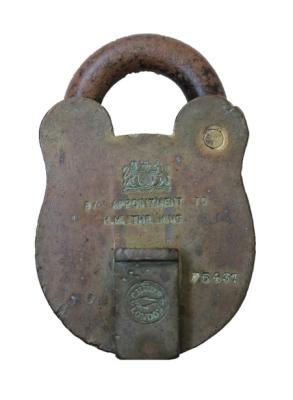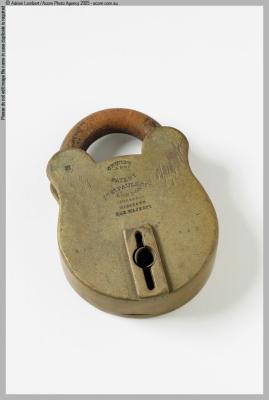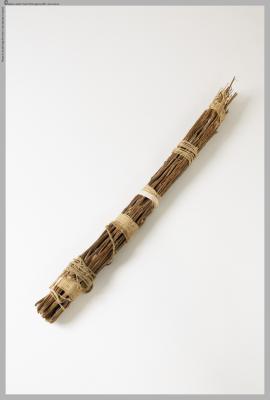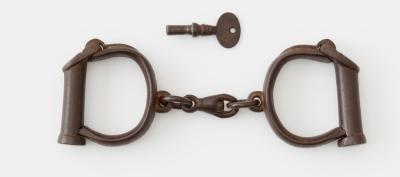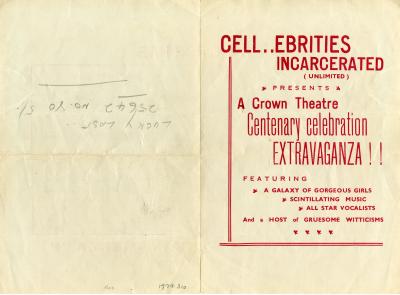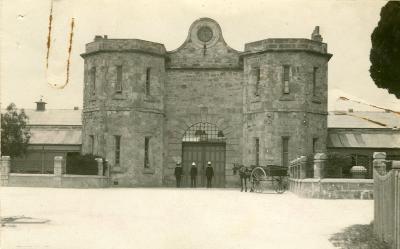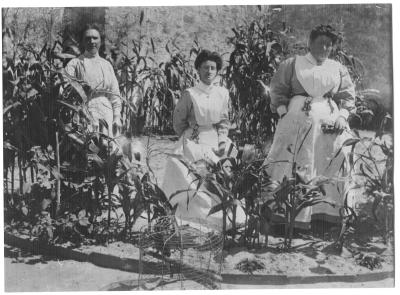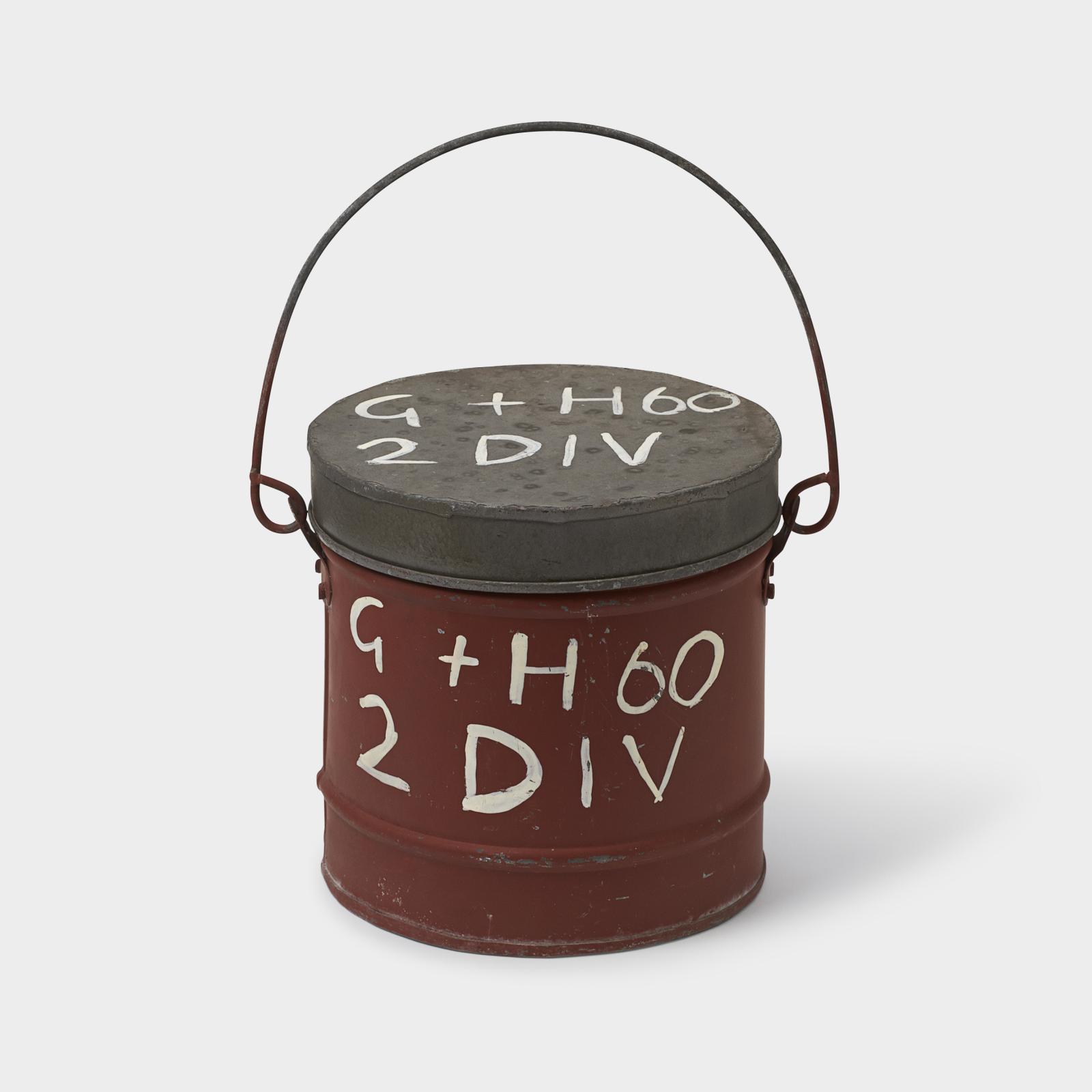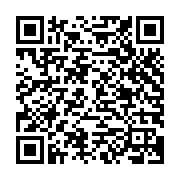METAL TOILET BUCKET
1863 - 1991(a) Large, round, metal toilet bucket. Cylindrical, galvanised sheet metal bucket with a straight sided body, with two small, rounded ridges near the top and base of the bucket. Attached to the sides near the top of the bucket is a thin, semicircular, metal handle. The outside surface of the bucket is painted a dark red. Painted in white on the side of the bucket is, 'G + H 60/ 2 DIV'.
(b) Large, round, flat, metal, bucket lid. Cylindrical, galvanised sheet metal bucket lid, with a wide lip which fits over the top of the bucket (part a). The outside surface is painted grey. Painted in white on top of the lid is, 'G + H 60/ 2 DIV'.
Used by prisoners at Fremantle as a toilet in their cells.
Details
Details
The hygiene and sanitation standards of Fremantle Prison underwent little modification throughout its history. Upon completion of the Convict Establishment, the Main Cell Block incorporated small, single cells, each featuring a wash basin with running water. Such amenities were considered a rare luxury at the time, and were reportedly envied by the free settlers of Fremantle. Despite the initial intention to provide prisoners with high sanitation standards, the wash basins proved to be an expensive failure for the Establishment, due to their constant need for repairs, the overflow of water from tap leakage, and the pungent smell of waste. It was under the recommendation of the Establishment’s Surgeon that the wash basins were eventually removed from all the Prison’s cells.
With the removal of the wash basins, prisoners were instead provided with two separate buckets; one for water and another to be used as a toilet. The toilet buckets, or ‘slop buckets’ as they were also known, would become a prominent object within the lives of most prisoners throughout the history of Fremantle Prison, representing the dehumanizing conditions of the system to which they considered themselves subjected.
During the 1970s there was an attempt to replace the toilet bucket with portable chemical toilets inside the cells. However, the introduction of these portable toilets proved to be unsustainable and impractical, as prisoners would both destroy the toilets and brew illicit beverages from the chemicals. As a result, the Prison returned to the traditional method of ‘slopping out’ with toilet buckets, a method which would endure until the Prison’s closure in 1991.
The emptying of toilet buckets was incorporated into the prisoners’ daily routine, which changed little over the course of the Prison’s occupancy. Every morning prisoners would be released from their cells, where they would be instructed to ‘file off’ to their division’s yard, wherein they would empty their buckets into septic traps before leaving the buckets on marked white lines to be disinfected by an appointed fellow prisoner. It is worth noting that the disinfection of the toilet buckets was not introduced until the mid-twentieth century.
The toilet buckets had a damaging effect on the mentality and psychology of prisoners and the lack of hygiene would ultimately contribute to the closure of the Prison. While some prisoners found it easier to accept the practice of toilet buckets, others found it repulsive and dehumanizing as one inmate recalls in 1991, “It’s really dehumanizing you know, just even to use one, to even have to look at one is dehumanizing. Lots of people don’t realise that outside. Has a very big effect on you morally you know.” The toilet buckets in the Fremantle Prison Collection were all left on site when the Prison closed in 1991, because the new maximum security prison Casuarina had adequate sewerage facilities.
Open in Google Maps
Nearest geotagged records:
- PHOTOGRAPH OF CATHOLIC CHAPEL AFTER 1988 RIOT (0km away)
- AD REM PRISON NEWSLETTER (0km away)
- CONCERT PROGRAMME (0km away)
- IMAGE OF CHRISTMAS FESTIVITIES (0km away)
- ENTRANCE TO FREMANTLE PRISON (0km away)
- IMAGE OF SALLY PORT (0km away)
- IMAGE OF THE MAIN CELL BLOCK (0km away)
- GATEHOUSE/RECEPTION (0km away)
- IMAGE OF BAKING BREAD (0km away)
- PHOTOGRAPH OF PRISON LIBRARY (0km away)
Nearby places: View all geotagged records »
